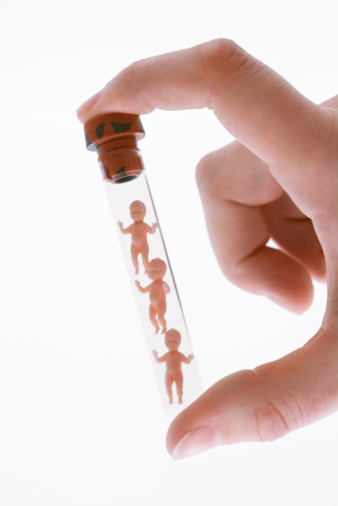In-Vitro Fertilization
 In –vitro fertilization is simply a process whereby the doctor harvests egg cells from a woman and sperm cells from the male partner. These two types of cells are then copulated together in the laboratories. Once the egg cell is fertilized, it’s then implanted in the uterus of a woman where it takes its natural course. Among the reasons as to why this particular method is usually successful is simply because it also undergoes the normal formation of the baby inside the woman’s womb.
In –vitro fertilization is simply a process whereby the doctor harvests egg cells from a woman and sperm cells from the male partner. These two types of cells are then copulated together in the laboratories. Once the egg cell is fertilized, it’s then implanted in the uterus of a woman where it takes its natural course. Among the reasons as to why this particular method is usually successful is simply because it also undergoes the normal formation of the baby inside the woman’s womb.
Children that are born through in-vitro fertilization are also referred to as test tube babies. Women must undergo various checkups during the course of IVF for the exact identification of their fertility setbacks. Women are usually advised to consume certain prescribed fertility drugs in order to stimulate the ovaries so that they can form more mature eggs that are used in the process.
In this period, the doctors monitor the patient very closely for an adjustment in the blood hormones level that helps them to arrive at a conclusion with the regard to the maturity of the eggs developed in the ovaries. Mature eggs are then collected from ovaries as the patient is put on anesthesia. It’s usually done with the help of a fine needle that is visible on the ultrasound which projects the progress. Vagina wall is then pierced and fluid containing the eggs is carefully collected.
These egg cells are then combined together with the sperms obtained from donor. When the procedure of fusing the eggs with the sperms is over, the sample is then reserved in an incubator. Generally, fertilization occurs within two days that results in the formation of the embryos. The best of these ball-like cells are then chosen to be placed in the uterus. Some embryos are usually stored in the laboratory which may be used in case of a failed initial attempt of conceiving a child.
When it comes to the final stage, the healthy embryos are implanted inside the uterus with the aid of a thin tube which is inserted in the uterus through the cervix. The quantity of embryos placed in the uterus is normally determined by the age as well as the fertility issues of the woman.
Which are some of the factors that determines the success or failure of IVF?
Female age
This is a very important factor that determines the success or failure of the in-vitro fertilization. As women age, the amount of eggs in their ovaries tend to decrease and also the quality of the remaining eggs normally lessens.
Quality of the embryo
Fertility specialists normally assess egg quality based on the age of a woman and also the quantity of cells in the egg. The embryo begins as a single cell and then continues to divide itself until it’s multi-celled. 3 days after egg retrieval as well as fertilization, many specialists prefer that several embryos have at least six or seven cells. Eggs that have fewer cells are usually less likely to fertilize also the chances of in-vitro fertilization increases.
With in-vitro fertilization, women can now conceive a child and have happy lives.